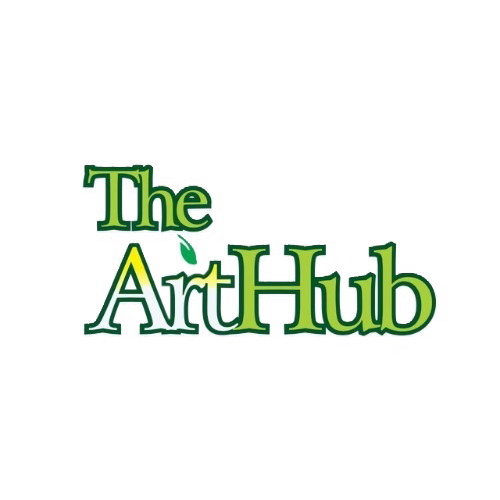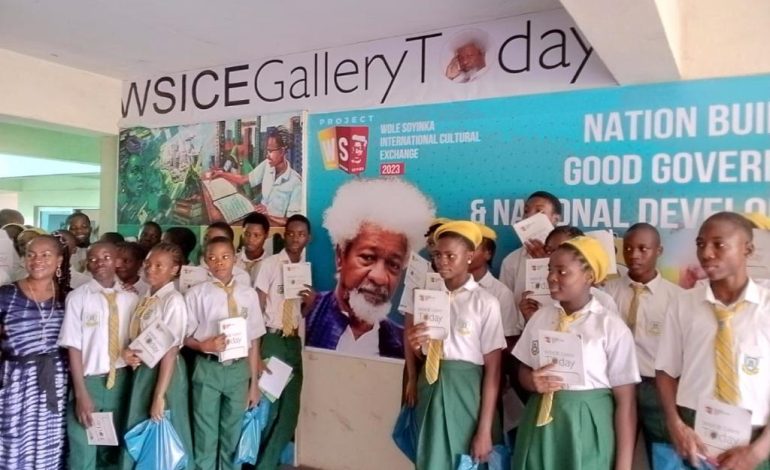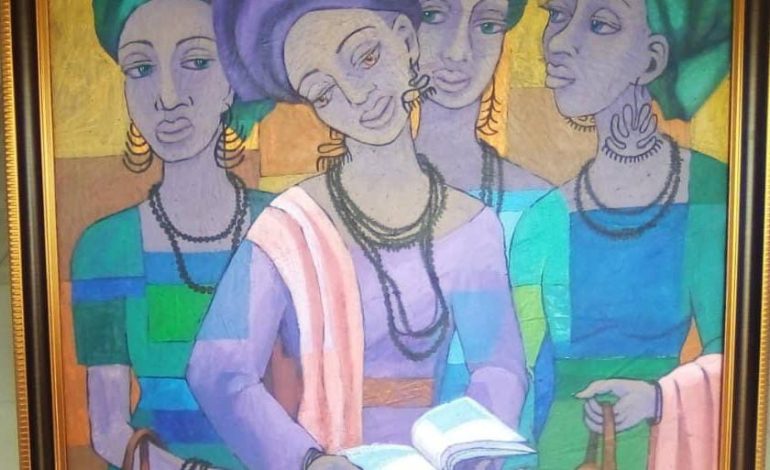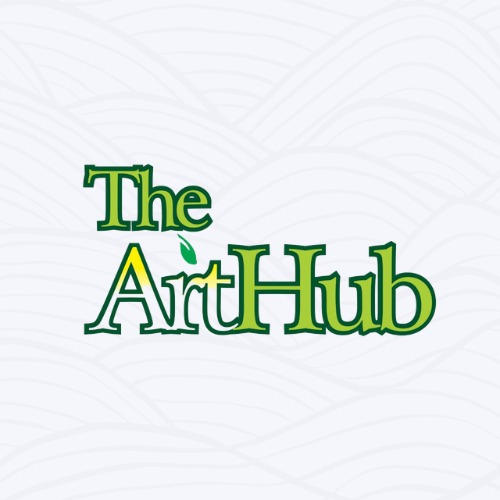Providus Bank hosts two cultural icons – Soyinka and Onobrakpeya – at its Lagos corporate office, July 16

* Second time the two will share same stage after San Diego’s ‘African Creativity and Performance’ show
By Anote Ajeluorou
THEY are the continent’s illustrious global culture icons. Both eminent creatives; one is a visual artist and culture advocate; the other, a writer and rights activist and humanist. But they are both teachers and mentors of generations of younger artists and culture intellectuals. The careers of both traverse vast landscapes of the world’s literary and arts circuits. Nonagenarian Bruce Onobrakpeya and Octogenarian Wole Soyinka; they are setting exemplar templates in interconnectedness of artistic resources.
This Sunday, July 16, both will prove again the power of cooperation and the possible rich harvests from collaborations when they are hosted by the management of poetry-loving ProvidusBank at the Rooftop Lounge of its brand new Corporate Office on Adeola Odeku Street, Victoria Island, Lagos. The occasion is the presentation of the latest publication by the Nobel laureate, Wole Soyinka titled Selected Poems (1965-2022: A Retrospective.
Last year the two cultural giants met in San Diego, USA for Dr. Bruce Onobrakpeya’s ‘Idi Owena’ (Urhobo for ‘The Great Artist’) show. Although the San Diego meet was essentially Onobrakpeya’s ‘Retrospective’ art show spanning over 60 years of his artistic creation, Soyinka was there for his fellow elder artist, and actually shared the stage with him to discuss ‘African Creativity and Performance’. It was a rare moment for American audience to see two of Africa’s foremost artists share stage and talk arts. Interestingly, a young Nigerian Kennii Ekundayo was the curator of the global showpiece, with Prof. Niyi Coker as the moving spirit behind it. ‘Idi Owena’ was a collaborative show by the School of Theatre, Television and Film, the School of Art and Design, and the Department of Africana Studies of San Diego State University, San Diego.

Onobrakpeya and Soyinka: two icons at home with nature in San Diego, US that recreates a pensive performance scene
The US collaboration of the two iconic elders was essentially a foretaste of what is to come this Sunday. The fast-growing financial institution ProvidusBank, which has been promoting the artistic vision of Soyinka, particularly providing a platform for young poets to bloom, says it is excited to host the two artistic phenomenon. Interestingly also, the show is focused on the concept of ‘Retrospective’ in much the same way as was Onobrakpeya’s US show last year. But this time it’s Soyinka’s ‘Retrospective’, featuring a selection of some of his published and unpublished poems that also span 1965 through 2022. Indeed, Soyinka made reference to the upcoming collection at his outing last year at Lagos Book and Art Festival (LABAF 2022) when he featured in a conversation with writers like Prof. Okey Ndibe, Tade Ipadeola, Prof. Awam Amkpa and Achalugo Chioma Ilozumba at the French Cultural Centre, Ikoyi, Lagos.
While Soyinka will launch his Selected Poems (1965 – 2022): A Retrospective, Onobrakpeya will exhibit his ‘art works’ that Soyinka insists ‘embellish’ the book, rather than ‘illustrate’ it (in his preface to the collection), in what promises a seamless integration of literature and visual arts. It would be recalled that Onobrakpeya was at the forefront of illustrating some of the earliest editions of the novels in the African Writers Series (AWS) at inception and other fiction works of the early writers, a writerly visual art collaboration that bloomed from their MBARI days in Ibadan. That old, almost-forgotten artistic collaboration is reincarnated in Soyinka’s Selected Poems and points the way to the unity of the arts. Fittingly, Soyinka has dedicated Selected Poems to his life-long friend and fellow culture icon, Onobrakpeya@90 and that pre-eminent gathering of Nigeria’s first generation artists, the MBARI pioneers.
Inimitably, Soyinka dredges up the San Diego show with Onobrakpeya and how it nudged him to the possibility of his own poetic‘retrospective’ that has culminated in Selected Poems, and he captures it in his usually characteristically sublime way, “In retrospect, it was ultimately my participation in the ‘Retrospective’ – an unplanned but felicitous play on words – of a lifelong colleague that finally did the trick, ending all hesitancy to fall in with my publisher’s nudge in the direction of this volume. A mixture of both published and hitherto unpublished verses, it brought home to me, in a multi-textured mode, its claim as just another Retrospective, albeit one in the literary medium. The guilty artist was Bruce Onobrakpeya – at 90 years. A colloquium on his life and works was part of the garnishing for the main feast – an exhibition in San Diego under the direction of a former Literature student – Niyi Coker – who has done much to insert Nigerian arts into mainstream Humanistic studies outside the country. The Bruce event was curated by Kennii Ekundayo from the generation after Niyi’s, one of the venturesome young vectors of the nation’s artistic mission.

Onobrakpeya, Soyinka and guests contemplating the artist’s works
“Seated on the stage at San Diego University, it struck me – not for the first time admittedly, but now as a process of startling clarity – that the artistic preoccupation in itself also aspires to the act of Retrospection, a constant reviewing and reworking of ideas as a perennial imperative of renewal. Furthermore, one could not help but relish the unique piquancy of a Retrospective conducted, not merely across generations – three in this case – or within any singular medium of expression, but across genres and mediums. The literary medium – poetry especially – under whatever rubric – usually ‘Collected’, ‘Selected’ or thematic, has always been a participant in this ritual of looking over one’s shoulder. Students of Literature have a field day in this respect, as they are often confronted with multiple versions of a published piece – both from antiquity and in contemporary time – between one edition and the next.”
Soyinka also takes time to explain the reason for the ‘embellishment’ that Onobrakpeya’s art works lend to his book thus, “As earlier remarked, this selection is framed, and moderately interspersed with the works of a graphic artist. The motivation is multiple. First, it simply seizes the opportunity to acknowledge the interior dialogue between artistic products in all genres, and also extends our scope of enquiry: why do some works tend to appear less transparent than others? It helps perhaps to remind ourselves that the poetic enterprise sometimes treats words like the material of the canvas, wood, fabric, even metals, beaten into shape! There are even more ambitious and/or radical others for whom each word or phrase carries a musical value. The poet takes the risk of a loss in literal clarity, as well as unpredictable response, is often reduced to shrugging off the issue by encouraging his or her reader to discard the problematic and at least – address the palate to the more accessible. A gallery of etchings, painting, sculptures and installations generally operates on the viewer along the same vectors of communication. The rest is left to critics – the genuine article of course, not the self-anointed, whose agenda has nothing to do with the Arts in any form, and whose poetic compass is limited to nursery rhymes such as – advocated in real, published life – Humpty Dumpty Sat On A Wall.”
Freedom as a concept is a phenomenon that is dear to Soyinka and for which he has spent his creative and activism years fighting to entrench in his home country Nigeria and elsewhere where people’s freedoms are abrogated by state power. The consciousness to fight for freedom had its incubation at MBARI, where other exiled creative pioneers from the Southern part of Africa were still battling colonialism and its worst variant, Apartheid, especially in South Africa. He recalled how that consciousness merged with Onobrakpeya’s San Diego show and how an art piece on ‘freedom’ Onobrakpeya gifted him in the heydays of MBARI reawakened in him the centrality of that concept, especially when Onobrakpeya recently visited him and was moved by that same art work that awakened in the artist profound nostalgia.

The icons holding tete-a-tete
According to him, “Sixty years after the MBARI phenomenon, I found myself on a San Diego stage, in California, celebrating my compatriot and colleague from the days of Independence euphoria, and suddenly I knew what would ideally wrap those products of early imagining and – expression – in tandem with their successors. A sudden flash from Bruce’s spontaneous gesture of the gift of one of his earliest woodcuts, which retains its prominent place on the wall through various physical displacements. It was a touching sight, when this artist visited me at my Ijegba Forėstage four or five years ago, to watch his eyes light up and linger over the contours of that young work. He then took a few strides across the sparse domestic gallery to review a more modern variation of that instigating motif, returned to the origin, shook his head in a private communion with time past. Then abruptly, as one who had recaptured the moment of uncluttered purity of creative innocence, he stood squarely in front of that board to resume his contemplation. Again he shook his head wordlessly, a wry smile on his face, then walked away to the waiting repast.”
The launch of Soyinka’s Selected Poems and Onobrakpeya’s exhibition of his works that ‘embellish’ the book is a collaboration between Soyinka’s publisher Bookcraft and the Committee for Relevant Art (CORA) on the platform of its monthly CORA BookTrek – and with the backing of ProvidusBank, which yearly, since 2019, stages its ProvidusBank PoetryCafé on occasion of the World Poetry Day every March 21.



